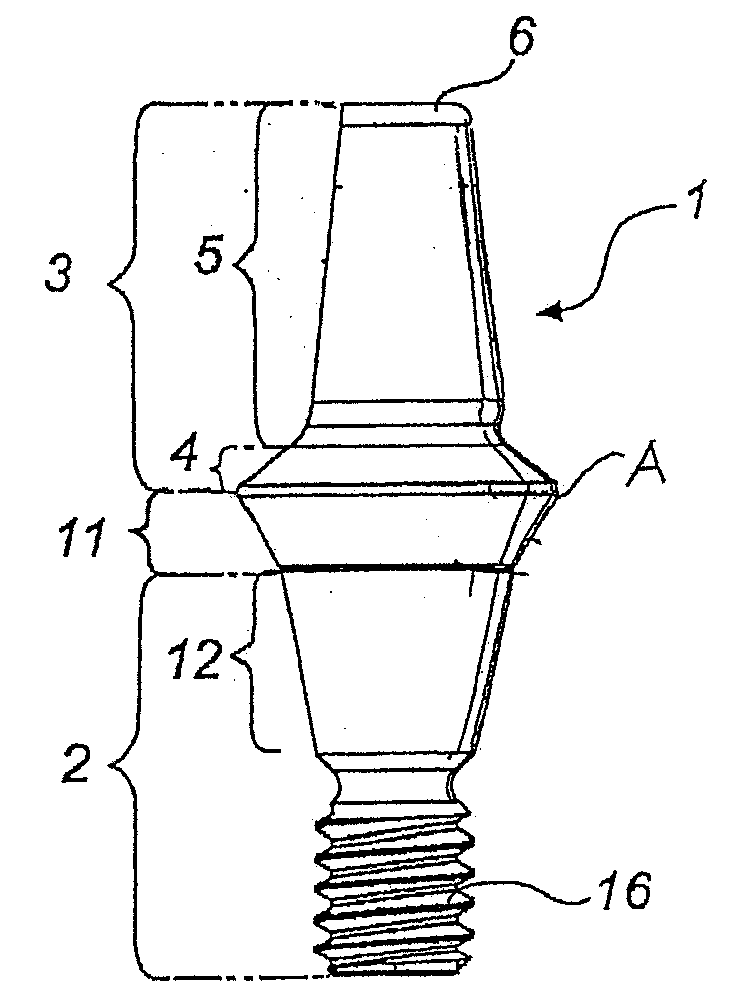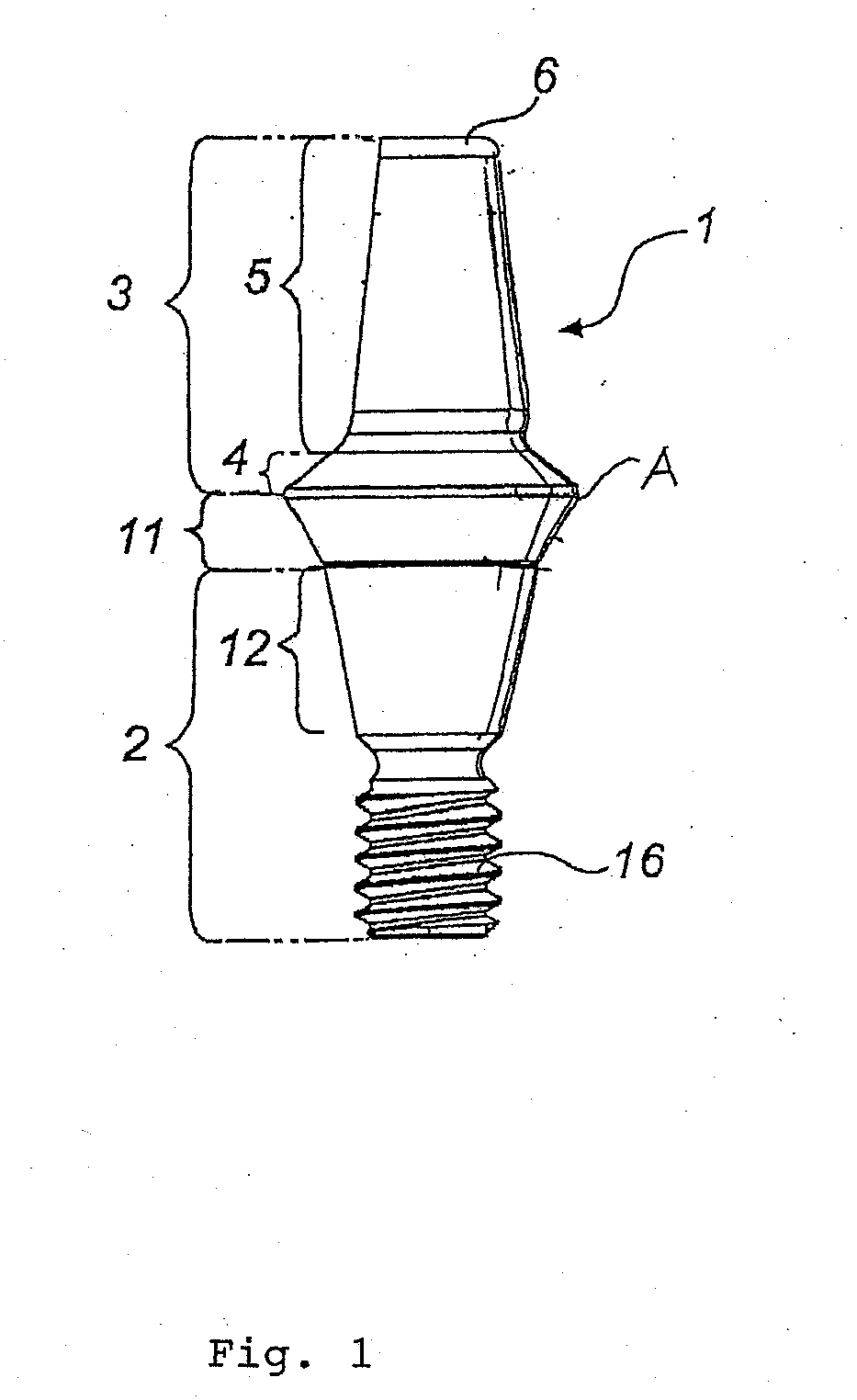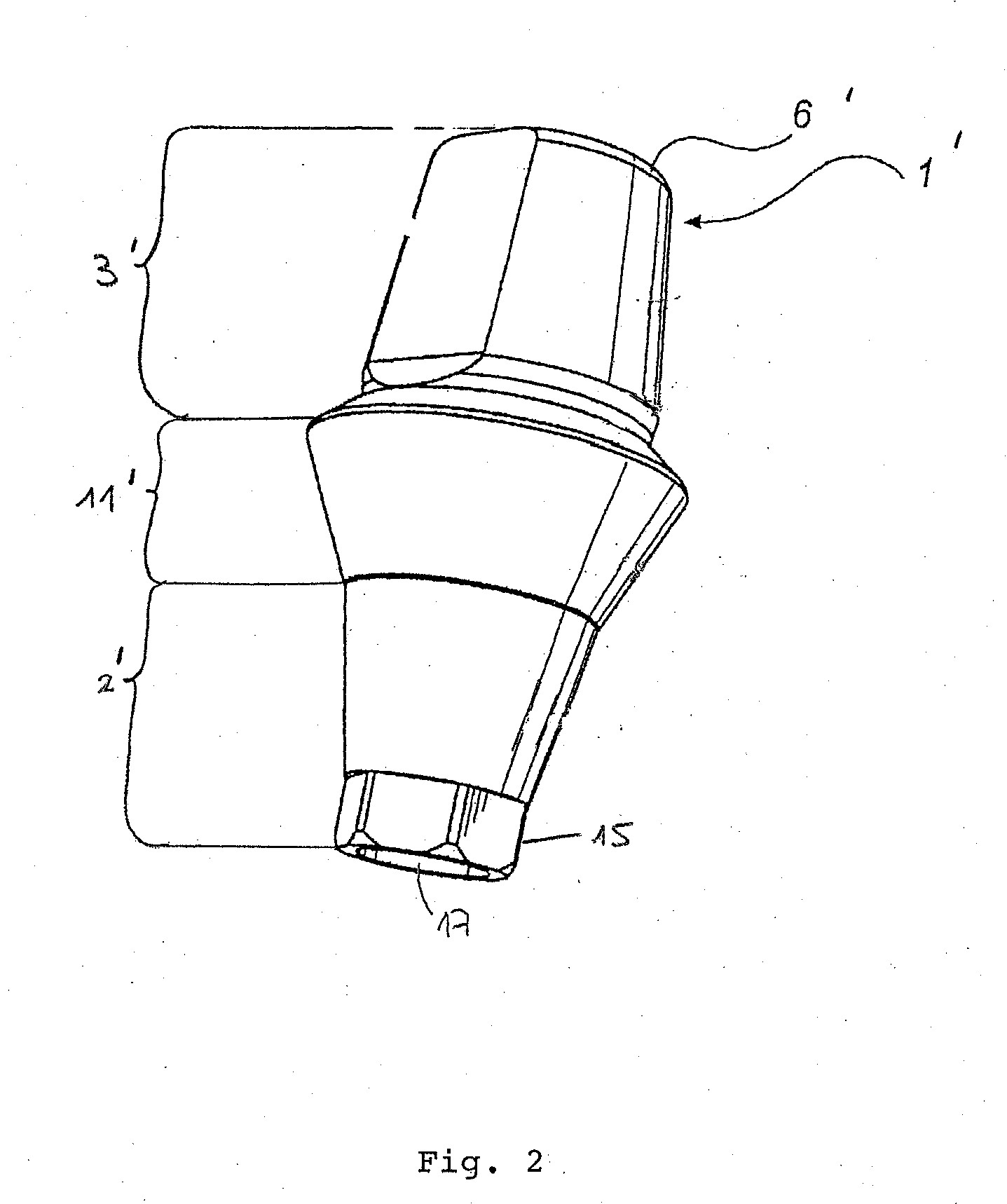Abutment with a Hydroxylated Surface
- Summary
- Abstract
- Description
- Claims
- Application Information
AI Technical Summary
Benefits of technology
Problems solved by technology
Method used
Image
Examples
example 1
Abutment with a Roughened Hydroxylated Soft Tissue Contact Surface
[0053]A common shape of an abutment was produced. The soft tissue contact surface was sandblasted with particles having a mean size of 0.25-0.5 mm. The roughened surface was then treated for about five minutes at a temperature above 80° C. with an aqueous hydrochloric acid (conc.) / sulfuric acid (conc.) mixture having an HCl:H2SO4:H2O ratio of 2:1:1. The abutment formed in this way was washed with pure water and then heat-sealed directly in a glass ampoule filled with pure water containing 150 mM Na+ ions, and the corresponding amount of Cl− anions.
example 2
Abutment with a Smooth Hydroxylated Soft Tissue Contact Surface
[0054]A common shape of an abutment was produced. The soft tissue contact surface was electropolished. The smooth surface was then treated for about five minutes at a temperature above 80° C. with an aqueous hydrochloric acid (conc.) / sulfuric acid (conc.) mixture having an HCl:H2SO4:H2O ratio of 2:1:1. The abutment formed in this way was washed with pure water and then heat-sealed directly in a glass ampoule filled with pure water containing 150 mM Na+ ions, and the corresponding amount of Cl− anions.
PUM
 Login to View More
Login to View More Abstract
Description
Claims
Application Information
 Login to View More
Login to View More - R&D
- Intellectual Property
- Life Sciences
- Materials
- Tech Scout
- Unparalleled Data Quality
- Higher Quality Content
- 60% Fewer Hallucinations
Browse by: Latest US Patents, China's latest patents, Technical Efficacy Thesaurus, Application Domain, Technology Topic, Popular Technical Reports.
© 2025 PatSnap. All rights reserved.Legal|Privacy policy|Modern Slavery Act Transparency Statement|Sitemap|About US| Contact US: help@patsnap.com



